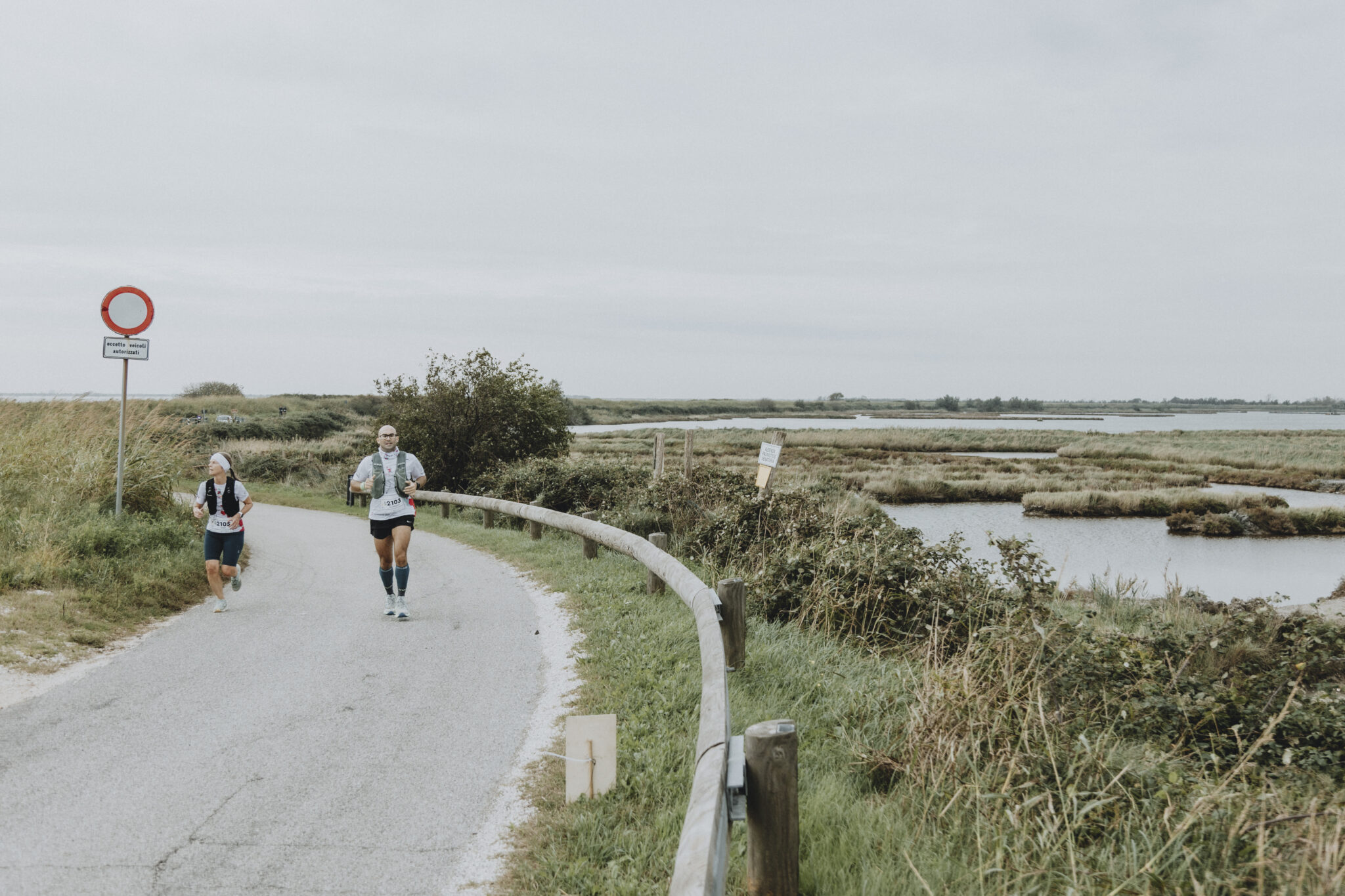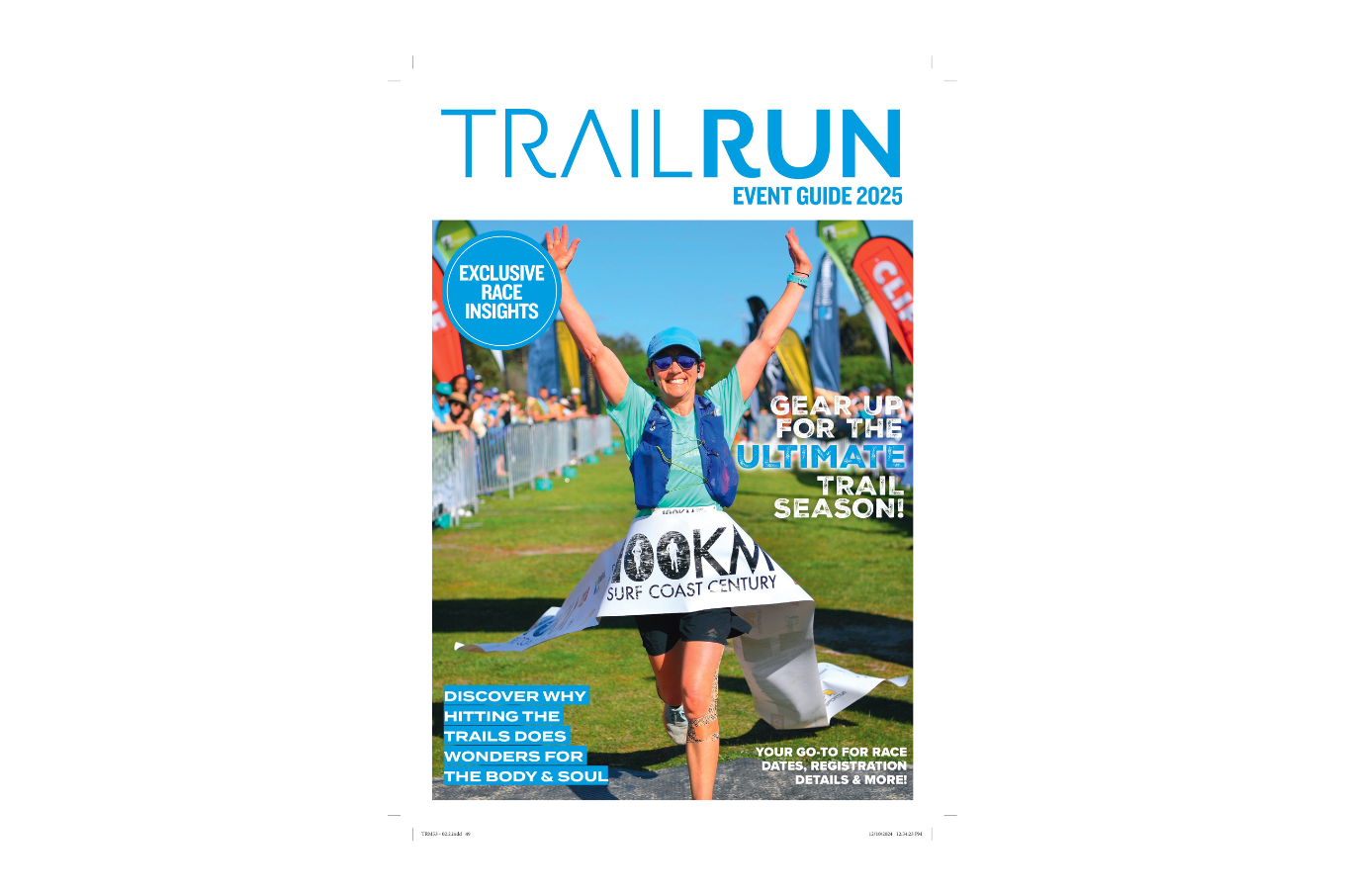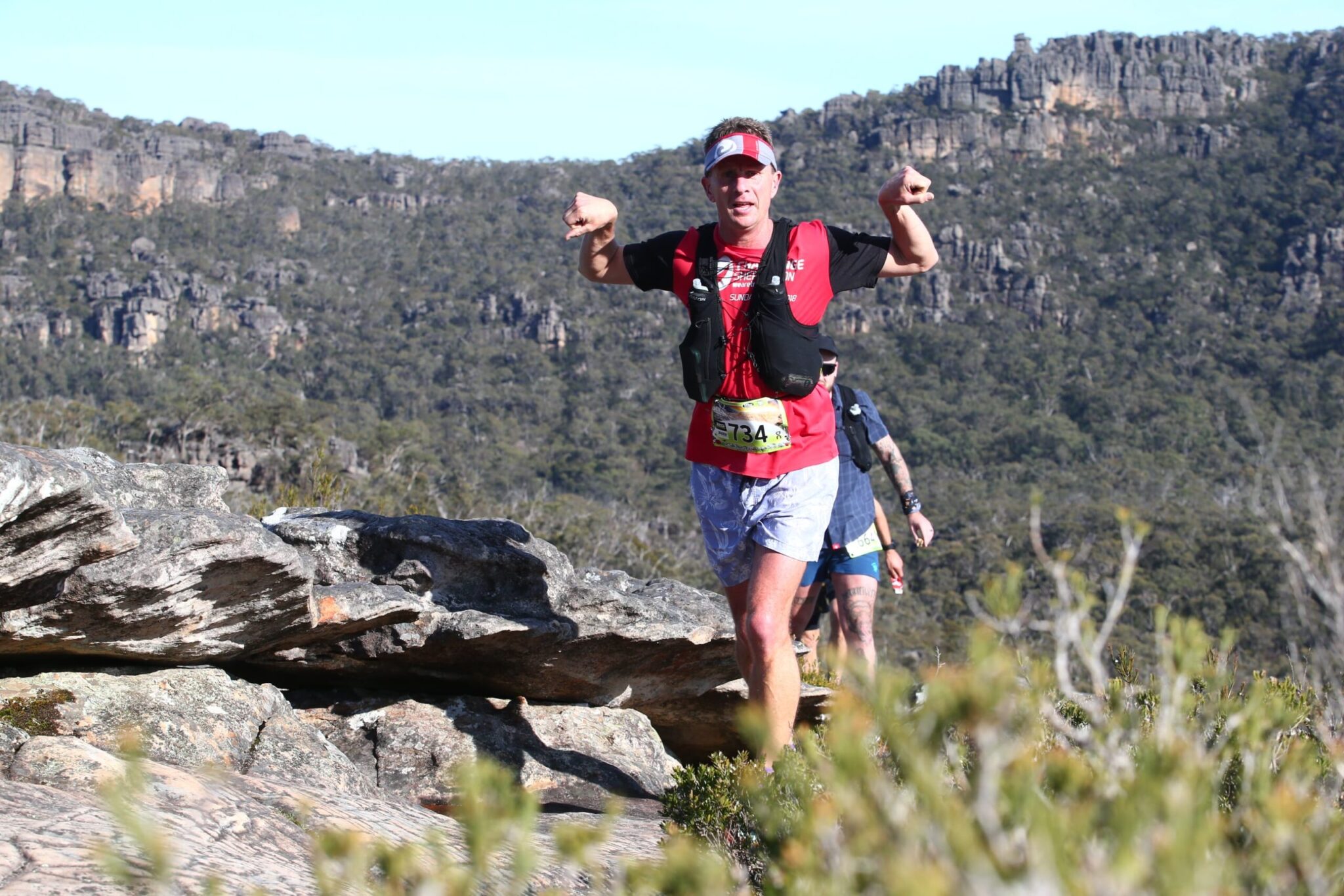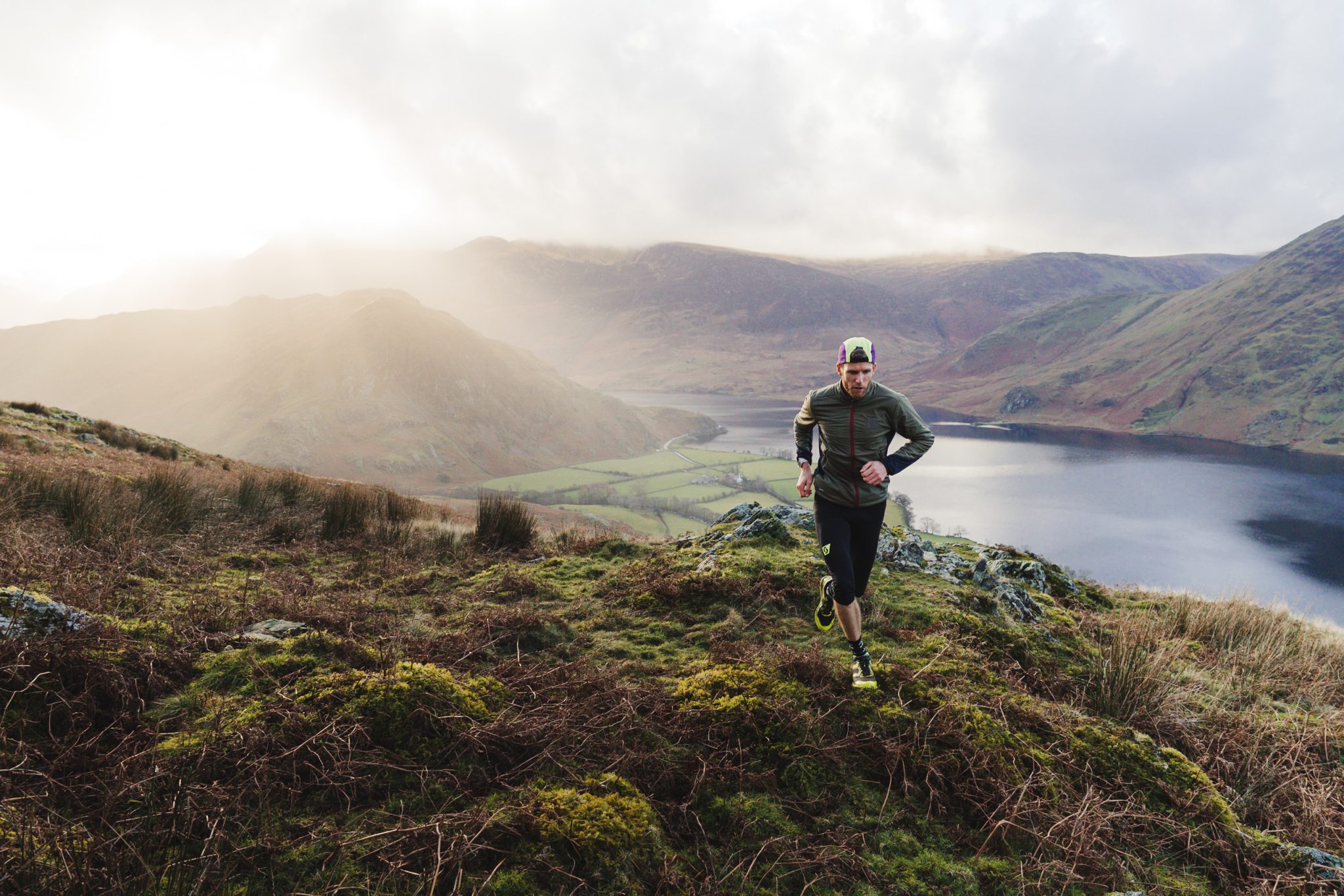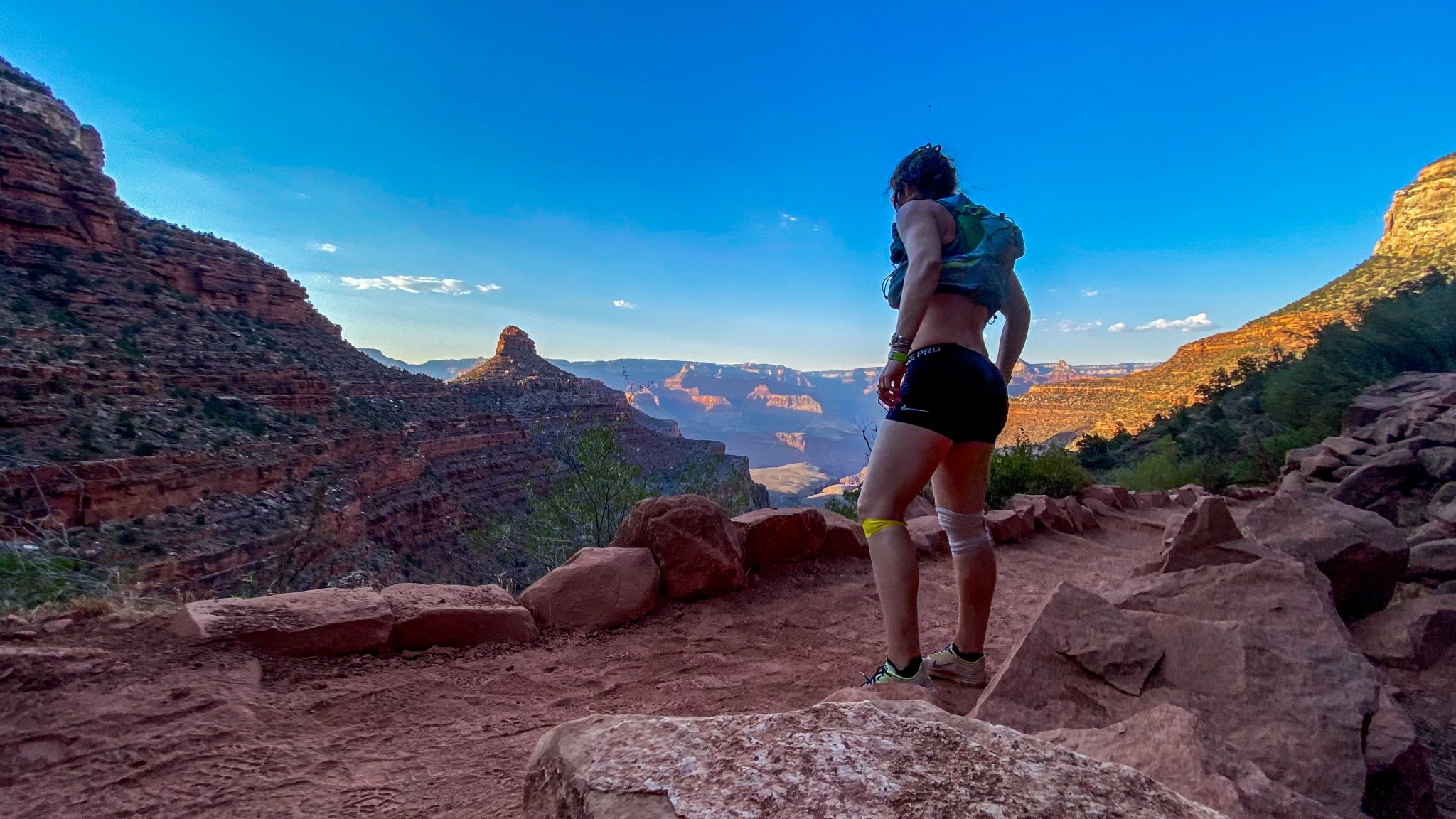It’s been a few years Shona! Last we saw of you in the spotlight you were caning ultra races – everything from Surf Coast Century to Ultra Trail Australia – but you lowered the profile for a while there. What was your hiatus all about and did you keep the miles up?

Okay, the truth? A few things went on. I went through a pretty stressful separation in 2015. I tried to race my way through it as ultra running and racing has always been a therapy for me. I jumped on the plane and raced the Ultra trail Mount Fuji and DNF’d.
That race (I’d raced it twice before) summed up how I felt at the time: pure depression. It was a different time of the year in Japan – September, not the usual April timing – and there was no snow on Fuji-san. No beautiful white-capped mountain like in all the classic photos. It rained for the first 80km. In the morning it was absolute fog with no views, all black and dark. The course had been altered significantly, too, the favourite sections had been removed to prevent erosion. All my pay-offs – views, single trails, forests – had been taken away. Large sections of the course had been logged, too. I was in one dark place physically, mirroring my emotional place post separation.
I miscalculated a check point, got lost and was without food and my energy levels slumped. I had pretty bad asthma. I was in 6th place overall and making good time, I’d finished there 2nd and 6th before and I felt like I had nothing to prove. I just didn’t want to finish. It actually felt like I was torturing myself. I dragged myself through 130 km before I pulled the pin.
Three weeks later I dragged myself around for my second 2015 Blackall 100 win, but I’d had enough, I needed a rest mentally.
My personal situation also changed up what events I could make it to. I had to stay local or just pop down to Sydney to visit family and friends for UTA or across to NZ for Tarawera Ultra. I had a great race at UTA 2016, another podium. I scored my 3rd Blackall 100 win 2016 and was moving well there, but my mojo wasn’t the same as in the past.
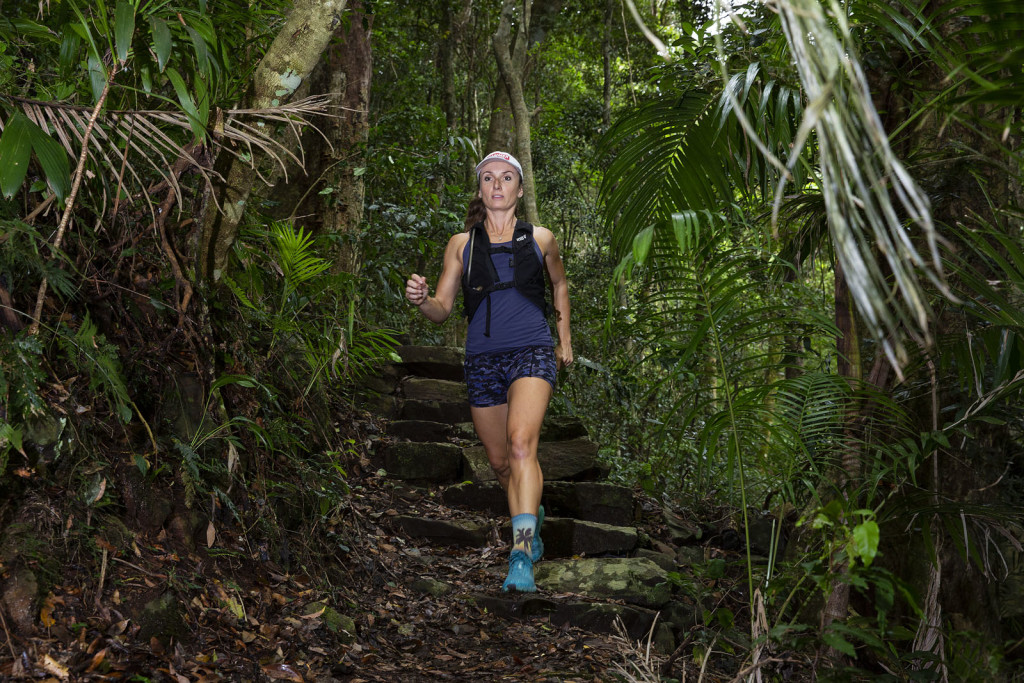
So I figured I really had to refocus on my two daughters, now 12 and 14. It’s important for me to be there for them as an engaged parent, a netball coach, take them trail running, bike riding and take the time and effort with them that my parents took with me when I was a teenager.
I still raced okay up until late 2017, setting a 20 minute record at Mount Mee Marathon, and a 29 minute record at Brisbane Trail Marathon. At the Darkness to Daylight I was the only finisher and it was my first 110km on the road but there was something looming with me medically.
So you didn’t really disappear from the running, you just kept it localised to Queensland for the most part?
Pretty much. I raced for the last time a 21km in February last year. It was a shocker, 20 minutes slower than the winning time the year before at the Mount Glorious Marathon. I wasn’t even able to puff. In other words, I could not push anaerobically. I just didn’t have it in me. I knew there was something else wrong. Adam, my partner looked at me. I was f@#ked. I decided then and there no more races until I am better.
So did you find out what was the underlying issue?
I’d a few health issues starting in 2017 where I had multiple fluid loops in my small intestines, that were giving me a bit of grief, then started to really get serious about being a celiac. I also had a stomach ulcer, about five UTI infections in two months and my energy levels were pretty bad and I just didn’t have it in me to race in 2018.
It seemed that every event I entered I would get sick just beforehand and I’d be a DNS and need a course of antibiotics. I seriously felt like I wasn’t absorbing any nutrients from my food to function, let alone race. I knew I had to recover before I raced again. I raced my fourth and final Blackall 100 finishing antibiotics four days beforehand. I was an hour slower but I didn’t want my last race to be a DNF. I wasn’t able to train at all. The conditions were shocking, freezing wet. I knew I wasn’t going to get pneumonia from asthma because I was on so many antibiotics so I finished it in 6th place and was proud of myself. I was happy I was even well enough to run 100km.

Have the health issues continued – are you looking at a comeback?
I’m better now but my focus has shifted. I had to take some time off and take the pressure off.
In 2009–2014 I racked up a bunch of podium placings but do I still have the fight in me to step back on the top tier? It’s a funny one…I did look at the Tarawera Ultra times and thought I should train properly again now that I’m on the mend. In my mind when I started racing I set a goal to come top 10 at UTMB and be ranked top 10 in the world in the Ultra Trail World Tour and I did it, 2014 being ranked 8th in the world.
Three 3rd places at UTA, with asthma and “go slows” at the end of those events means I’m really happy with what I’ve been able to do with my body and my lungs. It’s hard to top that achievement; hard to go mentally back knowing that I will have asthma again too.
So no big event on the calendar then?
I love the heat! If I am to race again, I will be picking hot events, all my best results are in about 35 degrees. I have no asthma when it’s this hot. HURT 100 Mile, Western States, anything hot and I will consider it. I really am a totally different runner in the heat. I’ve learnt when I race that I can trick my body into thinking it’s 35 degrees with heaps of clothes, then I also don’t get asthma either. I discovered this on my 2017 Kokoda Challenge and Skiing at Hotham 2018.
I guess I’m waiting for my next big athletic goal to materialise…I’m just waiting for that feeling of needing to fight to come back again.
You’ve spoken before about your being particularly attentive and sensitive to dietary demands of high intensity running lifestyle… talk to us about that.
I’m pretty allergic to so many foods: gluten, dairy, cashew, peanuts, sesame, sulphates, 220. It means that for 10 years I had to be perfect with my diet to make sure I could breathe properly before an event as I’m asthmatic and have exercise induced asthma.
I’m enjoying not having to stress so much about food (because I’m not operating at that high intensity at the moment). I was usually the one in the bushes with gut issues. So many of my races could have been faster If I knew then what I know now about my digestion, which is now explained by celiac disease. But when I was racing it wasn’t diagnosed and just emerging as a problem in the mainstream population.
I’ve worked out tapioca starch now sets off a fungi outbreak in my trachea which then sets off my asthma and I go downhill very fast. I’ve learnt to chew charcoal tablets to keep this at bay.
Having the stress of not knowing what I would be like on race day had a huge impact on my mental health. I’m really happy to chill now and start enjoying life a bit more. I’m asthma drug free, antihistamine free and I like it that way. I control my asthma symptoms with diet because in the end the asthma drugs didn’t help because it wasn’t fixing the real cause of the problem.
In saying that, I still run so much with my clients that I have to still be pretty good with my diet otherwise it’s too hard for me to do my job. If I eat crap, I run crap and I really don’t enjoy myself, so I stay clean with my food.
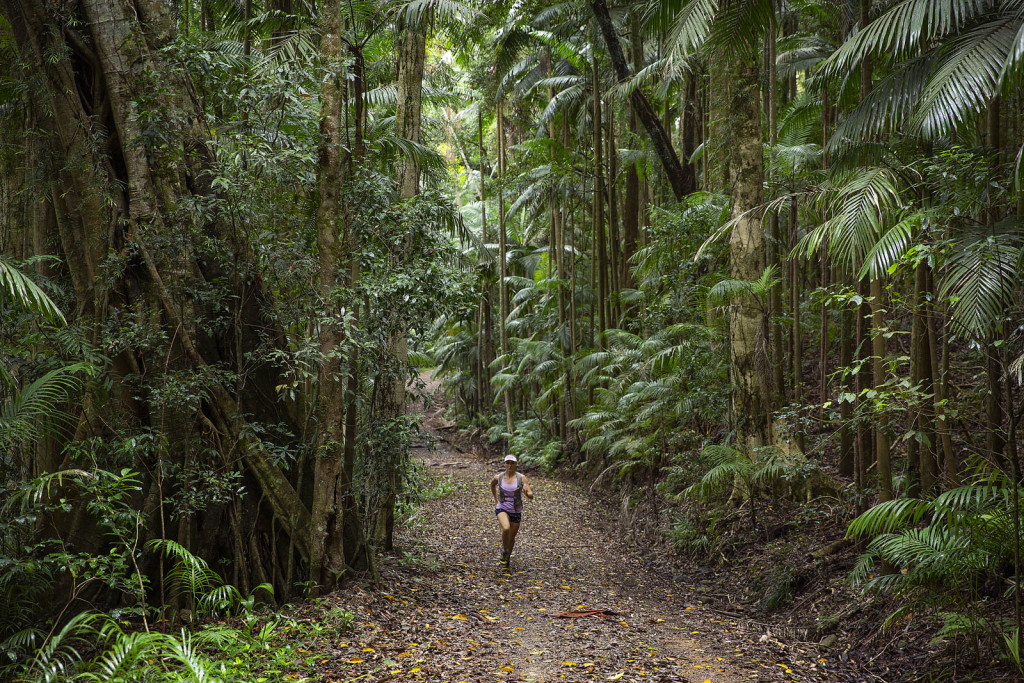
How’s you’re training look these days?
I still ‘log’ massive kilometres, (I haven’t worn a watch for about two years). I still love finding new trails, new climbs and new hidden gems. I’m forced to work hard on the road bike with my partner, Adam: he smashes me on the hills, flats, everything really, he’s a great athlete in his own right and I do my best to stay with him in the pack with the boys, still the lone girl chasing ‘em down. My running week is always hills, heaps of stairs, flat speed work and then long runs. But most importantly lots of chats and lots of fun.
Has your approach changed over the years from when you were winning everything in the 2009-2014 period to now?
I don’t think I have changed my approach other than I make sure I stretch and I incorporate Bikram Yoga into my routine. My body is in great shape, my job and the balanced approach keeps my biomechanics running smoothly. I’ve always loved bike riding, always loved the adventure, I’ve always incorporated strength into my routine.
I do now have to trick myself into interval training – I do it with a faster client then it doesn’t count as my own training and I don’t time it either.
I have to set time alone for myself to really get down time, it use to be easy when training for an event. Now I have to really lock it in with myself. We all need alone time.
What lessons did you learn as an elite runner?
It’s interesting, every event the seven virtues have to come through repeatedly:
1. Faith: belief in the right things, knowing that the race isn’t over until it’s over, just knowing and trusting in my training is enough to stay positive. Always taking a positive view, that my hard work will never go unrewarded. Understanding that mental toughness is knowing which thoughts are relevant and which thoughts should be pushed out of your mind.
2. Gratitude: always being thankful of the gift of running and of the help that you’ve had to get you to where you are.
3. Charity: always helping another runner on the trails even it is just giving them a few electrolytes. The “Trail Running Gods” always see this, giving is the best gift for both you and the receiver.
4. Fortitude: never giving up. Digging deep and know that sometimes it just takes a 3-minute recovery, or a lovely descent and you’ll feel better.
5. Solidarity: always wanting the best for your fellow competitor, if they pass you then it’s because they deserve it. Many a friendship has been started out racing and I love that about ultra racing. Be happy for those coming through in the scene and know that your records are meant to be broken. Always cheer, congratulate and give encouragement to your fellow runner, you also hear this and it then starts a positive feedback loop in your mind.
6. Prudence: care of and moderation with energy levels, goal setting, the descents, climbs, it’s a constant management of the body for the entire 100 miles!
7. Temperance: moderation of needed things and abstinence from things which are not needed. This one is important because goals can very quickly go out the window and it can be the reason why you DNF. Many a time I’ve wanted a 1st place or podium but I wasn’t in the right condition on the day. Just doing the event and finishing it is a bloody good achievement. Enough is good enough. Always after a DNF I’d return the finish line and watch the back markers come in. See how tough they were doing it and just acknowledging that even though I DNF’d for good reasons it’s important to really know any finish is a good finish and to be content with this.
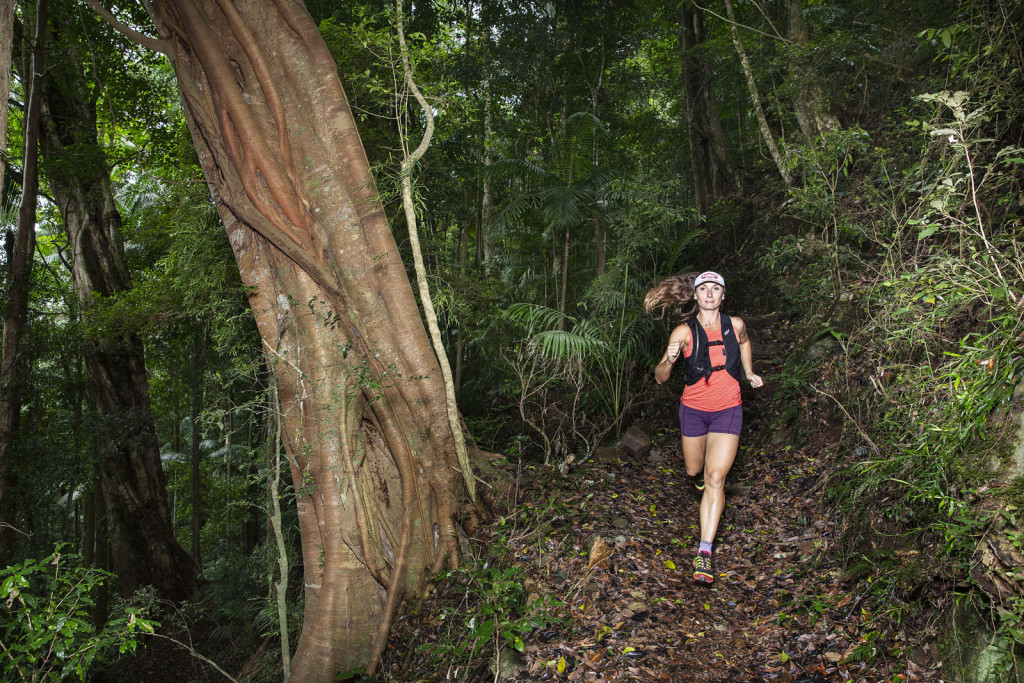
You’ve been around trail running pretty much since it started its phenomenal growth in this country — what are your thoughts on that journey, the growth of trail running and the growing pains that come with that?
I’ve loved watching the sport evolve. I was at the Surf Coast Century when Lucy was 15 and I even wrote an article for Trail Run Mag supporting youth in the sport. In Australia, we are lucky to be able to train and race all year round. We punch way above our weight for population in the sport and I think this is what also spurs on the trail running scene knowing that the likes of Brendan Davies, Beth Cardelli, Kellie Emmerson, Jill Fowler, Scotty Hawker, Ben Duffus have all been able to kick butt internationally, and also helped paved the way for Lucy Bartholomew who is killing. I’m enjoying watching our next generation of strong runners come through with Steph Auston, Alana Vought and Sam Burridge now making the podiums locally and internationally. It’s going to be a strong year for the Aussies and I love following them online.
What’s the trail scene like up in SEQ? It seems a pretty strong community?
Our running clubs are so strong. Brisbane Trail Runners has over 4000 members, Springfield Running Group (near Ipswich ) over 3000, Bunyaville Trail Runners over 500, White Rock Warriors over 100, Mountain Goats over 700 … it goes on. Our network is strong and the trails are amazing. We can literally run from the city in Brisbane and be on a trail within 5km. I mean real trails with over 100km of trail literally on Brisbane’s doorstep. This was what really inspired me to dare to bring the trails into the city and make the Brisbane Trail Ultra Festival into a really unique event just like the UTMB, UTA, UTMF, Buffalo Stampede. All these events bring the runners back into the city or town for the massive party at the finish line.
That brings us nicely to your latest project which will be an ultra effort on your part in and of itself: producing the all new Brisbane Trail Ultra Festival – tell us about the project and how it come about.
Since racing on the Ultra Trail World Tour back in 2013, I’ve wanted to put on a 100 Mile event. I just had to find the right location, great climate, stunning trails, big climbs and the right logistics to get international and interstate travellers to the start and finish line of the event.
Brisbane has the perfect combination of all these. Our city is only 20 minutes from the airport! Our trails start only 5km from the City CBD and we have a massive national park of D’Aguilar National Park, with Brisbane’s sub-tropical hinterland sitting right in Brisbane’s backyard.
I didn’t want to put on an event where it started and finished in the national park. I wanted to put on an event like the UTMB where you can literally walk from the finish line to your hotel or to a bar. So our finish line is only 100 meters away from 5 star luxury hotels and a bar only a stumble away from the finish line. I wanted a big party at the finish line, with a kick butt view in the background and that is Brisbane’s city skyline from our Queensland Maritime Museum festival finish.
All my favourite events had a massive party atmosphere at the end where all the athletes could sit, chill share a beverage, food and share trail stories about their epic adventure, like this finish of the 6 Foot Track, Tarawera Ultra, UTA, UTMB, UTMF, Mont Blanc Marathon all had a space for the athletes to chat and chill and enjoy their experiences together.

We also wanted to give back to the local and national community and be a fundraiser for Queensland Fire State Emergency Services (QFES). It might say Queensland in the name but I know for a fact that the QFES team has helped out in Tasmania, in the recent fires, internationally in California and all over the country. I’m aware of the proximity of the D’Aguilar National Park to Brisbane City and I wanted to help safe guard the local, state, national and international community by giving directly to QFES, that is why we have chosen then as our charity partner and $10 of every entry will go directly to QFES to help in training and safe guarding the community against natural disasters in the future.
So what are the courses?
We have:
30 km Solo and Relay (1 ITRA Point)
60 km Solo and Relay (3 ITRA Points)
110 km Solo and relay (5 ITRA Points)
100 Mile Solo (6 ITRA Points maximum)
The 30 km, 60 km and 110 km came swiftly, the 100-mile came later. We listened to the trail running community and really filled a sector of the market that needed to be filled. A good quality, solid 100 Mile event in July. No navigation, no laps, just amazing trails.
The 110 km course was design to set runners up nicely who were looking at the UTMB. Kellie Emmerson will be running the 110 km and will then race the UTMB six weeks later. Our local GC superstar, Alana Vought, will also be toeing the line for the 110km, she only just missed my record 10:59:59 at Blackall 100 due to being lost. She is also one to watch. We are also giving away $1000 in cash prize to winning female and male of the 110km.
The 60km is designed to lead runners into a 100 km event. Steph Auston and Sam Burridge will be lining up for this one. Both winning female and male will win a trip to race the next Hakuba International Trails 50km in Japan.
The 30km is a teaser for amazing trails to come. This course has stunning trails, sweeping views and of course the kick butt finale finish line of the other events.
We then have relays. I always loved the relay runners coming up behind me then pacing me between check points at the SCC and this is what we used as inspiration for the Brisbane Trail Ultra Festival relay legs.
We have a 2-person relay leg for the 30 km, 3 person relay leg for the 60 km and a 5 person relay leg for the 110 km. Something for everyone, and it’s been picked up by Sanfilippo Children’s Foundation as their endurance fundraising event for the year which we are really excited about. One of our race ambassadors is a mum of a child who has the fatal disease, she’s a local and we just wanted to be able to help in some way. We are proud to have her at our event too.
Talk to us about the course in particular — what are the more challenging aspects and why?
To me the 30km, 60km are all “runnable” . There are sections on the 110km and 100mile course that are pure hands on quads though.
There are three climbs on the 100 Mile course that you’ll need to walk, one climb on the 110km course; the rest is runnable – it is just a matter of how good you are at running up hills! Yes, we have single trails but they are not overly technical like HURT 100 or Tarawera Ultra. The climbs are big, yes, but nothing like Europe and they are half the size of UTA but more of them and more undulating. On the plus side is that there is more recovery for every climb. To me it is a good solid running course and I am expecting quick times. I would also say it is a fast course as there is no altitude, minimal stairs, no navigation, we will heavily sign post the course, like UTA.
Thanks for your time Shona and good luck with the new Brisbane Trail Ultra!
Entries are open. See:


